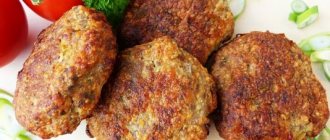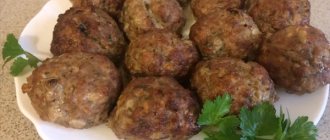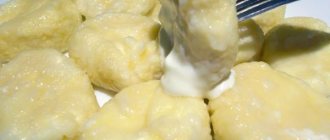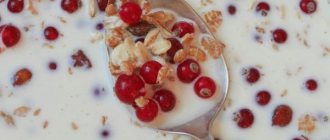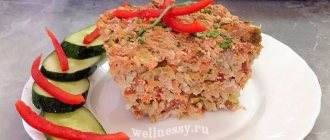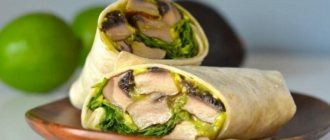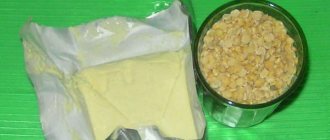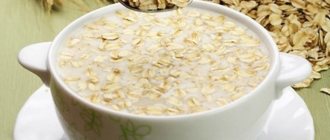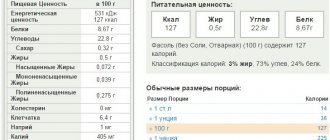Basic rules of the dietary table No. 5
For a positive result, you must follow several rules that are provided for by this diet:
- You need to eat at least 5 times a day in small portions.
- Dishes can only be boiled, steamed, baked or stewed.
- All products that are enriched with fiber, as well as stringy meat, must first be ground.
- Cereals must be thoroughly boiled.
- Sauces are prepared without using toasted flour, but using vegetable broth or milk.
- The menu should mainly consist of products containing pectins, dietary fiber, lipotropic substances and liquids.
- Products that can cause fermentation or rotting in the intestines are not allowed.
The rules are quite strict, and most of them relate to the use of certain food products.
Diet menu table 5 for children
Medical nutrition is also relevant for children. Diet table 5 for children is prescribed for diseases of the kidneys and bladder.
Excluding foods such as chocolate, carbonated water, hot seasonings, smoked foods and marinades will only benefit the child’s body. Diet table 5 includes the protein, carbohydrates, and vitamins he needs in full. This includes lean meats, fish, vegetables, fruits, berries, butter and vegetable oils.
Milk, cottage cheese and fermented milk products contain protein, calcium and phosphorus, which a growing child urgently needs, and help normalize the children's intestinal microflora, especially if treatment was carried out with the use of antibiotics. Such proper and gentle nutrition in small portions 4-5 times a day will help the child quickly recover from illness.
Due to poor nutrition, the number of liver and biliary tract diseases in children has recently increased significantly. The causes of liver damage can be not only errors in diet, but also infectious diseases.
Sample menu for every day of diet 5
Invites you to familiarize yourself with the approximate diet for each day that this diet provides. You can add or remove permitted products, certain products within the rules. The menu is designed for 7 days, with a total of 6 meals (breakfast, afternoon snack, lunch, snack, dinner and second dinner).
Day No. 1
- An omelette of two proteins, rice porridge + a spoon of butter, weak tea with lemon;
- Low-fat cottage cheese casserole;
- Soup from grated vegetables, soufflé from boiled meat, stewed carrots, compote;
- Weak tea with honey;
- Macaroni and cheese, still water;
- One glass of kefir (2.5% fat).
Day No. 2
- Meat cutlets with milk sauce, grated carrot salad, weak coffee with milk;
- Apple;
- Potato soup, berry jelly, stewed beets with boiled lean fish;
- Rose hip decoction;
- Buckwheat porridge with water, still water;
- A glass of kefir.
Day #3
- Low-fat cottage cheese + two tablespoons of sour cream, rice (boiled), weak tea, oatmeal with milk;
- Baked apple;
- Boiled chicken breast (150 g), rice porridge, vegetable soup, dried fruit compote;
- Fresh juice;
- Fish cutlet (steamed), mashed potatoes, milk sauce and rosehip broth;
- A glass of kefir.
Day No. 4
- Pasta and beef (grid and cook);
- Lazy dumplings;
- Vegetable soup from mashed potatoes, cabbage rolls, jelly;
- 2-3 soft fruits;
- Rice porridge with milk with a spoon of butter, weak tea;
- Kefir (1 glass).
Day No. 5
- Weak coffee with milk, low-fat cottage cheese, buckwheat with water;
- Apple (baked);
- Boiled meat soufflé, pasta and jelly;
- Weak tea with honey and milk;
- Boiled fish (150 g), mashed potatoes, vegetable salad, still water;
- Kefir (1 glass).
Day No. 6
- The tea is weak, steamed meat cutlets, boiled buckwheat;
- Carrot puree, apple jam;
- Milk soup with spaghetti, curd pudding, compote;
- Kissel (1 glass);
- Semolina porridge with milk, still water;
- Kefir (1 glass).
Day No. 7
- Weak tea with milk, rice porridge with water;
- Apple (baked);
- Steamed meat cutlets, pasta, vegetable soup, compote;
- Rose hip decoction;
- Steamed egg white omelette, cheesecakes, still water;
- Kefir (1 glass).
As you can see, the menu is quite rich, and you are unlikely to suffer from lack of food and hunger. If you do everything correctly, you can not only achieve an ideal figure and get rid of fat, but also normalize the functioning of the intestines and gastrointestinal tract.
Several delicious recipes
With diet No. 5, many foods are allowed for proper digestion and intestinal function, so it’s easy to diversify the children’s menu if desired. Basic recipes will help a busy mother cook quickly and tasty.
To read: Food additive E509: benefits and harms of calcium chloride, use in making cheese and cottage cheese, contraindications
White omelette
Compound:
- whites of two fresh chicken eggs,
- grated mild cheese – 10 grams,
- milk or water - 2 tbsp,
- salt - on the tip of the knife.
To prepare, melt 5-10 grams. butter in a frying pan. Mix egg whites and milk separately in a container. Pour into a bowl, cover with a lid. After 3 minutes on low heat, sprinkle with cheese, then remove after a minute. Serve with herbs and sour cream 15% fat.
Vegetable casserole
Compound:
- boiled cauliflower inflorescences – 500 g,
- cottage cheese – 50 g,
- salt,
- milk – 50 ml,
- whites of two eggs.
Beat milk, egg whites and salt. Preheat the oven to 180 degrees, grease a baking dish with butter. Place the cabbage, pour the whipped mixture over evenly, and sprinkle with cottage cheese. Cook for 20 minutes.
Main indications and how to follow the diet 5
Diagnoses for which it is advisable to follow diet table number 5:
- cholecystitis;
- liver changes caused by cirrhosis (in the absence of decompensation);
- chronic hepatitis, and not only C;
- fibrous transformations of liver cells;
- cholelithiasis.
Important: Specialists practice such therapeutic nutrition only during the period of chronic disease . When there are concomitant work disorders (ulcers, gastritis or colitis), it is impossible to follow the principles of diet menu 5.
Adhering to the principles of eating according to diet table number 5 is quite simple, although at first glance it may not seem so.
Several basic regime requirements:
- It is important to eat food in portions – 5-6 times a day;
- The total energy capacity (calorie content) of all substances received during the day should not exceed 2500 kcal;
- You need to consume at least 80 grams of protein per day with food, and the proportion between animal and vegetable proteins will be 50 to 50 (equal shares);
- Fats cannot exceed 76-78 grams, vegetable fats should be in the majority;
- Carbohydrates - the volume of their consumption is satisfied when vegetables, fruits and cereals enter the body, but only the allowed amount is approximately 400-450 grams;
- The total amount of liquid in the form of water, tea – 8 glasses;
- Salt – 8-10 g;
- The content of oxalic acid, purines and large amounts of coarse fiber should be kept to a minimum.
If you carefully monitor the amount of food and the content of these substances in it, you can significantly reduce the load on the damaged liver and improve its condition as a whole - this is what the Table 5 diet menu is aimed at.
Diet features
Diet table 5 provides for fractional meals (5-6 times a day) with a limitation of fats, especially refractory ones. Such nutrition should prevent stagnation of bile in the gallbladder and help restore liver cells damaged by the disease.
For a patient for whom the doctor prescribes table 5, the diet prohibits eating fried, smoked, spicy, canned, and fatty foods. Products such as mushrooms, radishes, sorrel, beans, spices, cocoa and chocolate are completely excluded. It is unacceptable to eat rich pastries and fresh bread.
Dishes for diet table number 5 must be steamed, baked in the oven or boiled and eaten warm.
It is contraindicated to eat too cold or hot food. Salt intake should also be limited.
However, a diet that is gentle on a diseased liver must be complete and contain the proteins, carbohydrates, microelements and vitamins necessary for the body. Therefore, for table number 5, the diet offers a wide variety of products:
- lean meat (beef, rabbit), poultry and fish (pike perch, cod, navaga);
- milk, cottage cheese and kefir;
- pasta;
- 1 egg per day (preferably as a steamed omelet);
- bread, preferably black and stale;
- vegetables, raw or boiled;
- cereals - oatmeal, semolina, buckwheat, rice;
- any berries and fruits;
- butter and vegetable oil, as an addition to dishes;
- sugar, jam, jam, honey;
- tea or coffee with milk, rosehip decoction, fruit and vegetable juices.
In addition to the ban on eating foods that, in principle, are undesirable even for healthy people, diet table 5 involves limiting broths, meat and fish soups. If you cook soup with meat, then after 5 minutes of boiling the first broth should be poured out, then pour a fresh portion of water over the finely chopped meat and cook the broth until tender.
It is recommended to cook milk porridges first in water, adding milk only at the end of cooking. You should limit your consumption of cheese. The consumption of sharp cheeses is completely excluded, as well as hot seasonings, for example, mustard, pepper or horseradish.
Product table
During therapeutic nutrition, not everything is allowed to be eaten. Let's consider in the form of a table what is possible and what is not allowed during diet table No. 5.
| Products | What can you eat | List of prohibited |
| Meat | Turkey, quail, chicken, lean veal, beef, horse meat, rabbit; rarely - milk sausages | Goose and duck meat, lamb, pork, any offal, canned food, lard, smoked meats and sausages |
| Fish | Perch, pike, tuna, cod, pike perch, pollock, bream, hake; rarely - salmon | Fatty fish, canned fish, smoked and salted fish |
| Seafood | Oysters are fresh; rarely – shrimp, mussels, squid | Crab sticks, any caviar |
| Cereals | Oatmeal, bulgur, buckwheat, millet, rice, semolina, couscous | All legumes, corn, lentils, barley, pearl barley |
| Bread and pasta | Bran, rye bread and dry wheat bread, dry sponge cake, crispbread, biscuits, crackers, pasta made from grade I flour | Fresh bread, puff pastry and pastry products, pasta made from grade II flour |
| Milk | Natural yogurt, kefir, cottage cheese and milk (maximum 2% fat), low-fat sour cream; rarely - mild cheese | High fat dairy products, whey, fermented baked milk, cream, cheeses |
| Eggs | Quail and chicken exclusively in the form of steam omelette | Hard boiled and fried |
| Vegetables | Beets, zucchini, carrots, pumpkin, cucumbers, potatoes, cabbage (sea cabbage, cauliflower, broccoli, Peking cabbage), celery; rarely – lettuce, bell pepper, tomatoes | Radish, onion (green and onion), eggplant, radish, asparagus, turnip, garlic, corn, parsley, sorrel, rhubarb, dill, spinach, any mushrooms |
| Fruits and berries | Pomegranate, banana, apple, avocado; limited – watermelon, pineapple, papaya | Other berries and fruits |
| Seeds and nuts | Flaxseeds | Any nuts, sesame, pumpkin and sunflower seeds |
| Dried fruits | Dried melon and papaya, raisins, prunes, dried apricots | All other dried fruits |
| Beverages | Weak black tea (with sweetener), chamomile tea, rosehip infusion, pureed compotes, non-acidic fruit drink, freshly squeezed juices diluted with water in a 1:1 ratio | Alcohol, chicory, green tea, coffee, juices, cocoa, carbonated drinks, hibiscus, tea with stevia and knotweed herb |
| Dessert | Marmalade, candies without cocoa and chocolate, marshmallows, lollipops, honey, Turkish delight and nougat without nuts; rarely – sugar, marshmallows, gingerbread, meringues, jam | Halva, chocolate, cream products, popcorn, chuk-chak, condensed milk, sherbet, waffles, ice cream, hematogen, chewing gum, muesli bars |
| Seasonings | Sauces (milk, sour cream, vegetable), rarely soy sauce | Any spices, pepper, vinegar, adjika, mayonnaise, horseradish, mustard, ketchup |
| Oil | Refined vegetable oil, butter, rarely – olive oil | Cooking fats, unrefined oil |
Therapeutic diet
The list of permitted products is quite wide. Restrictions apply only to fatty, spicy, salty and fermented foods, because such food increases the secretion of digestive juices of the pancreas and irritates the gastric mucosa. Below is a list of foods that should be limited or completely eliminated.
Table ration number 5
Group. Allowed-Forbidden
| First |
|
|
| Vegetables |
|
|
| Meat |
|
|
| Fish and seafood |
|
|
| Flour |
|
|
| Cereals |
|
|
| Milk products |
|
|
| Eggs |
|
|
| Berries and fruits |
|
|
| Dessert |
|
|
| Beverages |
|
|
Having a list of acceptable dishes and products, you can create therapeutic nutrition. It is recommended to prepare the menu in advance, at least 2 days in advance. This way you can stock up on the necessary products and select recipes, and preparing dishes will take less time. Exact adherence to all diet rules will protect against exacerbation of the disease and speed up recovery.
Delicious children's menu recipes
The children's menu for diet No. 5 is very varied. You can combine all the products from the approved list, getting new and interesting recipes. Such nutrition will help maintain the health of the whole family and prevent possible exacerbations of chronic diseases of the gastrointestinal tract.
Lazy dumplings with berry sauce
- Take 500 g of five percent cottage cheese. Rub it thoroughly through a sieve. This will make the dish more airy and tender. Add one egg, a little salt and a tablespoon of sugar. Add flour until a fairly thick dough is formed. Mix it thoroughly. Let the dough sit and swell for a while.
- At this time, place a pan of salted water on the stove. Bring to a boil. Cut the dough into long strips (about two centimeters thick). Cut into cubes. Drop the dough pieces into boiling water. Cook from the moment they rise to the surface for 12-15 minutes. Remove with a slotted spoon and place on a plate. Excess water should drain.
- Making berry sauce is quite simple.
To do this, take any berries. They can be fresh or frozen. It all depends on the season. Boil the berries with a little water (until syrup forms). Add 2 tablespoons of sugar per approximately 400-500 g of berries. Mix 1 tablespoon potato starch with cold water. Stir thoroughly so that there are no lumps. - When the berries have boiled with sugar for 10 minutes, pour in the starch in a thin stream. Heat through, but do not bring to a boil. When the first bubbles appear, remove from heat. The sauce is ready!
- Cool the berry sauce and serve with dumplings. You can decorate the dish with banana or fresh berries. Be sure that your baby will really like this dish, and he will certainly ask for more.
This simple and simple recipe will help mothers feed cottage cheese to babies who categorically refuse any fermented milk products.
Diet table 5 for children is necessary when the child has diseases of the pancreas, liver and gall bladder. Often the cause of diseases of the gastrointestinal tract are infectious diseases, irregular diet, poor diet, overcooked, fatty foods, dry food and frequent consumption of fast food. This diet is prescribed outside the acute stage.
How to cook food
If you have been prescribed diet table No. 5, you should take care in advance of drawing up a sample menu for the week. One of the main components of this diet is proper processing of foods . Cooking occurs in strictly defined ways. This includes cooking, baking, steaming, and rarely stewing.
When preparing any dish, none of the ingredients are fried. Stringy meat must be chopped, and vegetables must be pureed.
Diet 5 table: who is this diet indicated for?
Diet 5 table is a therapeutic diet. It has nothing to do with weight loss diets. The 5 table diet was developed by the doctor Pevzner almost a hundred years ago, but doctors still prescribe this diet to patients. This suggests that this nutrition system really works and helps improve the patient’s condition.
Nutrition “Table No. 5” is prescribed for diseases of the liver, gall bladder and biliary tract. And specifically when:
- liver cirrhosis, if there is no liver failure
- chronic gastritis
- cholelithiasis (without exacerbation)
- hepatitis (without exacerbation)
- cholecystitis (without exacerbation)
- chronic colitis
- during the recovery period after acute colitis and gastritis
- after removal of the gallbladder (in the postoperative period)
It is worth remembering that nutrition is one of the important components of recovery. Eating according to table No. 5 normalizes digestion and helps improve bile secretion. The liver rests and recovers during the diet. Table No. 5 will help avoid exacerbations. This diet can last for months, years, or even a lifetime. Therefore, you should not consider the 5th table as a diet that limits you, treat it as a way of life, as a good habit.
Allowed foods for diet No. 5
Despite such restrictions, the menu for every day of diet number 5 can consist of a variety of dishes. There are quite a few permitted foods within this diet plan:
- Low-fat varieties of fish and meat. In accordance with the rules of the diet, you can eat beef, chicken and turkey. However, beef is a rather stringy product, so it needs to be prepared in the form of a puree or soufflé. Chicken and turkey can be cooked whole, but should be eaten without the skin.
- Soups (vegetable, puree or cream soups). To prepare such dishes, vegetables should first be ground. You can use carrots, potatoes, pumpkin. Oatmeal, rice and semolina are excellent cereals. For dressing it is best to use sour cream or butter.
- Dairy products. If the main goal of the diet is the treatment of colitis and other gastrointestinal diseases, then it is better to use milk as one of the ingredients in dishes. It is allowed to use curd puddings or cheesecakes.
- Fruits and berries. These products can be an alternative to sweets. However, they can only be consumed in grated, boiled or baked form. It is also allowed to prepare mousses or jelly based on them. Dried fruits must be thoroughly ground.
- Honey or jam. In small quantities, these products can also be eaten instead of sugar.
- Eggs. In this diet, they can be used mainly for making protein omelettes. No more than 1 piece of yolk should be eaten per day.
- Vegetables. It is recommended to use boiled pieces of zucchini or pumpkin. You can make mashed potatoes from boiled cauliflower, grind carrots and beets.
- Butter. Used only as a salad dressing.
- Coffee, tea and juices. Sweet juices must be diluted with water beforehand. It is recommended to drink rosehip infusion or tea with lemon more often. Coffee should be weak and always have milk added.
Beverages
• Black tea with lemon or milk. You can add a little sugar or xylitol to tea. • Rosehip – always in the form of a decoction. • If individual tolerance is possible, juices can be pre-diluted with water. • Compotes from ground dried fruits and fresh fruits. • Jelly. • Jelly and fruit drinks with a little added sugar.
Soups (the main dish of the diet)
• Vegetable soups with the addition of potatoes, zucchini, pumpkin, carrots. • Cereal soups with buckwheat, semolina, rice. You can cook noodle soup. • Soup dressing: 10 g sour cream or 5 g butter. • Fruit soups. • Milk soups with pasta. • Borscht with low-fat broth. • Vegetable cabbage soup. • Beetroot soup. • Pea soup (adding small amounts of legumes). • Soup with pearl barley.
Porridges and cereals
• Viscous and pureed porridges with rice, buckwheat, oatmeal. You can cook porridge in water or in milk diluted 50% with water. • Cereal dishes: casseroles, souffles, puddings. You can add cottage cheese and vermicelli to dishes. • Pilaf with dried fruits. • Muesli that does not contain prohibited additives. • Cereals. • Bulgur, couscous. • Millet porridge. • Flax seed.
Snacks
• Vegetable salads with vegetable oil dressing. • Fruit salads can be consumed in small quantities, but only as a snack. • Zucchini caviar. • Soaked lightly salted herring. • Jellied fish after pre-cooking. • Gefilte fish. • Boiled meat in seafood salads. • Vinaigrette with the addition of permitted vegetables. • Sauerkraut, which is pre-washed to remove salt.
Meat/fish/seafood
Lean beef, veal, rabbit, chicken, turkey (all poultry without skin). Only boiled or steamed, pureed or chopped (cutlets, soufflé, puree, dumplings, beef stroganoff, soft meat in pieces); cabbage rolls, milk sausages (very limited); low-fat fish (pike perch, cod, hake, pollock, tuna), fresh oysters; shrimp, squid, mussels - limited; lightly salted salmon, salmon - limited in fat content and as a snack, not a main course; dumplings with veal or chicken (dough, lean meat, water, salt) - very limited in fat content and definitely (!) - not fried.
Pasta
• You can add any products from the list of permitted products to the paste.
Bread
• Bread made from bran or rye flour. • Dried bread made from first and second grade flour. • Rusks. • Cookies: biscuits and unsweetened dry cookies. • Dried sponge cake. • Wheat slices. • Breads that do not contain artificial additives. • Bran.
Fermented milk products, milk and milk-based products.
• Low-fat sour cream. • Mild cheeses in small quantities. • Kefir, yogurt, cottage cheese, milk, fat content of products should not exceed 2%. The maximum daily volume is 200 ml • You can use cottage cheese to make lazy dumplings, bake cheesecakes, casseroles and puddings. • Curdled milk. • Feta cheese in small quantities. • Yogurts that do not contain artificial additives.
Vegetables
• Potatoes, cauliflower and Chinese cabbage, pumpkin, zucchini, carrots, beets. These vegetables can be boiled and baked, but only consumed in grated form. • In small quantities it is allowed to include various salads in the menu, for example, iceberg, corn, romaine. • You can eat bell peppers in small portions. • Sea cabbage. • Avocado. • Tomatoes in extremely small quantities. If the disease is in the acute stage, then they are excluded from the menu. • Steamed or baked green beans. • Broccoli and celery, boiled or steamed.
Oil
• No more than 30 g of butter per day. • Refined vegetable oil (no more than 15 g per day). The oil is used only as a salad dressing. • Olive oil can be consumed in small quantities.
Eggs
• You can make an omelet from eggs or boil them. No more than 2 quail eggs per day and no more than half a chicken yolk in dishes.
Seasonings and sauces
• Fruit gravy with flour added. It is not fried in advance. • Milk, vegetable and sour cream sauces. • No more than 10 g of salt per day. • Dill and parsley. • Vanillin and cinnamon. • Soy sauce can be added to dishes in small quantities.
Sweets
• Boiled and baked fruits and berries. The main condition: they should not be sour. • Compote of dried fruits, fresh dried fruits, but in small quantities. • Jelly, jelly, mousse. • Marmalade. • Candies that do not contain cocoa and chocolate. • Jam, which is best added to tea or made into fruit juice. The jam should not be too sweet or too sour. • Sugar can be consumed in small quantities. • Dumplings with potatoes, cabbage or berries. The dough is prepared using water and flour, lightly salted. • Lollipops. • One gingerbread per day. Chocolate is prohibited. • Turkish delight and nougat, which do not contain nuts. • Soft caramels, without seeds, sesame and nuts. • Biscuit, but no more than one piece per day.
Berries and fruits
• Soft sweet apples. They can be eaten raw, baked, or ground. • Banana, but not more than 1 piece. in a day. • Mousses and jellies with added sugar substitute. • Pomegranates can be included in the menu in small quantities. Patients with hemochromatosis should not eat pomegranates. • Prunes. • Two pieces of watermelon per day. • Dried melon and papaya, dried apricots. These fruits are added to salads in small quantities. In their pure form, they are prohibited for consumption. • Fruit puree that is allowed for table No. 5.
What foods can I eat?
If the doctor has recommended that your child follow diet No. 5, it is better when creating a menu for the week to select foods that are allowed in such a therapeutic diet. All products can be divided into permitted and prohibited.
Permitted products include:
- Dried wheat crackers, yesterday's baked goods.
You can have some flour products made from rye and first or second grade flour. - Pies with various fillings. You can add apples, cottage cheese, minced meat or fish to your dishes. Such pies should not be fried, but baked in the oven.
- Oven-baked or steamed fish.
Children under three years of age should eat white fish (hake, pollock, cod). For older children, you can include red fish in the menu. It is advisable to choose varieties that are not entirely fatty. Salmon or fatty salmon are not suitable for children. An excellent replacement would be trout, as well as pink salmon and chum salmon. - Poultry, turkey, beef.
Pork is lean. Fat and lard are removed before cooking. - Soups cooked in vegetable or cereal broth.
You can cook milk soup, but be sure to dilute the milk with water. - Omelettes, steamed or baked in the oven without a fried crust
. You can boil eggs hard. Eggs should be included in the menu on diet No. 5 no more than 1-2 times a week. - Cabbage
, which should be stewed well. - Special children's vegetable and fruit puree in jars.
It is especially suitable for children from 6 months after the introduction of the first complementary foods. - Fermented milk curds, yogurt or kefir
, enriched with beneficial bifidobacteria and lactobacilli. Give preference to low-fat products. - All sweet fruits and berries.
- All vegetables (except prohibited ones).
With great caution - tomatoes. - Unsweetened and low-fat crackers and biscuits.
Sweets should be chosen without chocolate coating. You can eat honey and various dried fruits. - Cereals.
Give preference to rice, oatmeal or buckwheat. - Fruit drinks and compotes
made from dried fruits and berries. You can make fruit drinks from frozen berries. When properly frozen, they do not lose their beneficial properties and vitamins. Still mineral water. Various berry jelly. The tea should not be strong. Cocoa with milk.
After numerous observations of children with various diseases of the gastrointestinal tract, scientists compiled tables of possible product combinations.
By eliminating prohibited foods, you can achieve stable remission of the disease.
If your child has loose stools, give preference to products that strengthen them. Be sure to include rice porridge and meat products in your diet. For constipation, you should increase the amount of vegetables and fruits. The beneficial fiber they contain will have a positive stimulating effect on intestinal motor function.
Prohibited foods on diet No. 5
Diet 5 for a week at home should not contain the following products:
- Meat, fish or mushroom fatty and strong broths.
- Fresh bread, buns.
- Canned and smoked products.
- Fried, chunky meat.
- Fatty fish and meats, caviar.
- Spicy and salty cheeses.
- Cottage cheese with high fat content.
- Egg dishes, except omelettes.
- Mushrooms and legumes.
- Garlic, onion, sorrel, radish and cabbage.
- Crumbly porridge.
- Chocolate and ice cream.
- Pickles and marinades.
- Black coffee without milk, soda and cocoa.
- Spices and snacks.
What can you cook on the fifth diet?
- Beetroot broth made with beet broth, left to ferment, with the addition of fresh cucumbers, parsley, eggs and low-fat sour cream.
- The meat is boiled in peasant style, then stewed with carrots, celery, potatoes and green peas. Filled with sauce made from boiled milk and flour.
- Lazy dumplings made from cottage cheese mixed with flour, sugar and butter.
- Meatballs are prepared from minced meat with the addition of soaked white bread and stewed in water. Before serving, add a little oil.
How long to keep the fifth diet?
To get used to it, the patient is first transferred to diet food according to the 5 table diet menu for a week, then for five weeks. This algorithm is used for additional therapeutic effects in hepatitis C and pathological changes in the liver , the duration is usually one and a half or two years.
To ensure variety in the menu for every day according to diet 5 table, it is reasonable to calculate the list of products used during the week. It is also advisable to make preparations and think in advance what dishes should be prepared. This advice will help make your diet balanced in microelement composition, as well as save your family budget.
For what diseases of the gastrointestinal tract is the diet indicated?
Diet No. 5 is prescribed only by a doctor. It is indicated for the following diseases of the digestive system:
- Liver diseases.
Cirrhosis, chronic hepatitis of various origins (viral, toxic, infectious). - Diseases of the biliary tract and gallbladder.
These are cholecystitis, cholelithiasis, cholangitis, postoperative syndrome after removal of the gallbladder. Very often, the cause of damage to the biliary tract is Giardia, protozoa and other pathogens. - Stomach diseases.
Chronic gastritis and gastroenteritis. - Pancreatic diseases.
Chronic and acute pancreatitis, pancreatoduodenitis.
